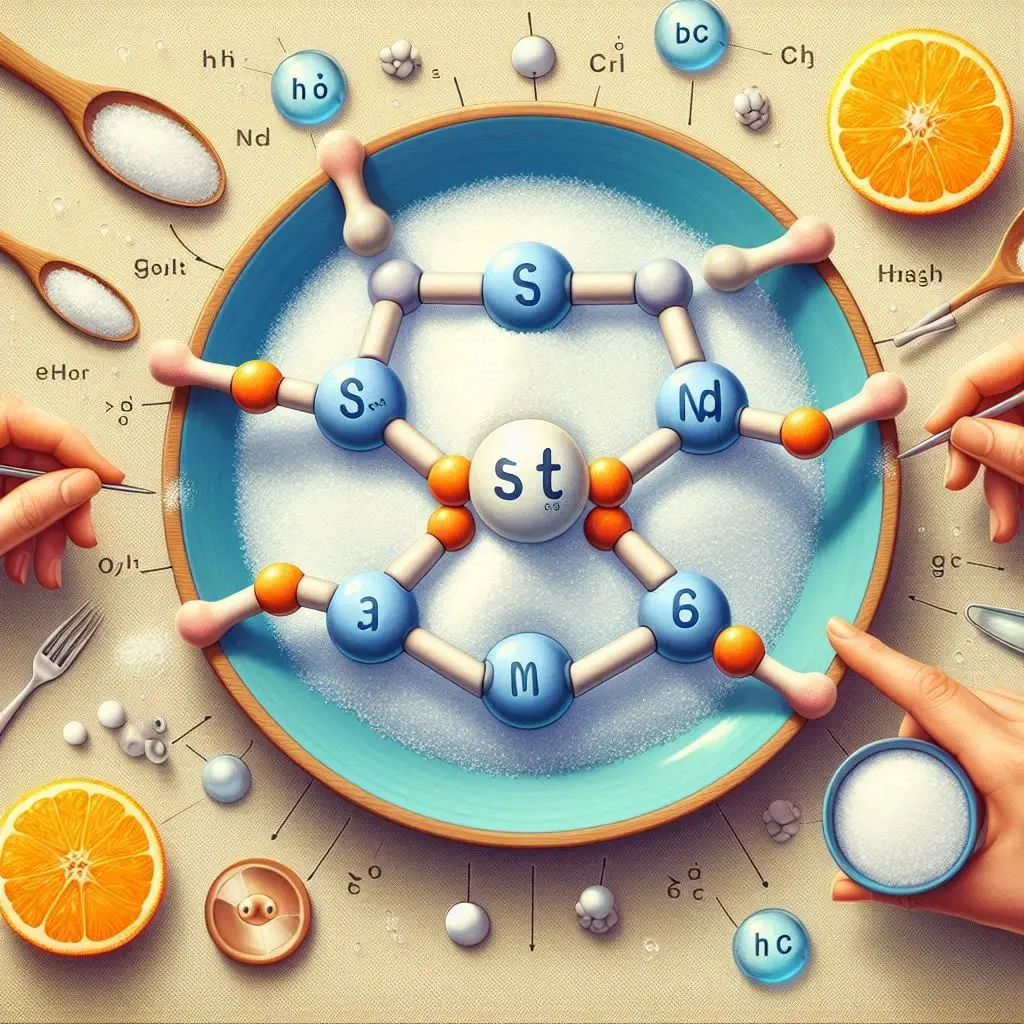
Is table salt ionic or covalent
I want to talk about is table salt ionic or covalent.
Ionic bonding is shown by sodium chloride (NaCl), often known as table salt. There are two basic forms of chemical bonding: covalent and ionic bonds, each having unique properties. The ionic character of table salt's bond is essential to understanding its characteristics and behavior.
An ionic substance known as table salt, or sodium chloride, is created when electrons are transferred from sodium and chlorine atoms. An electrostatically maintained three-dimensional lattice structure forms as a consequence of the ensuing ionic bond. Table salt gains distinct properties from this bonding, such as high melting and boiling temperatures, water solubility, and dissolved conductivity. Comprehending the ionic characteristics of table salt is crucial for appreciating its attributes and usage in many domains, ranging from culinary applications to industrial procedures.
Table salt's importance goes beyond the kitchen because of its ionic connection, which is present in many aspects of industry, infrastructure upkeep, and even human physiology. Because of the compound's special qualities, which stem from its ionic nature, it is widely used in a variety of sectors and is very versatile, demonstrating the value of basic chemical concepts in real-world applications.
Electrons are transferred between atoms during ionic bonding, usually between a metal and a nonmetal. The combination of the metal sodium (Na) with the nonmetal chlorine (Cl) yields sodium chloride. Sodium easily loses its single valence electron in its outer shell to form a stable electron configuration like that of noble gases. Contrarily, chlorine may easily receive one electron to form a stable configuration since it has seven electrons in its outer shell.
Negatively charged chloride ions (Cl-) and positively charged sodium ions (Na+) are produced when an electron is transferred from sodium to chlorine. The ionic bond is formed by the electrostatic forces of attraction that hold these ions together. The end product, sodium chloride, is made up of alternating arrangements of positive and negative ions in a three-dimensional lattice structure.
Ionic substances, such as table salt, exhibit several unique properties. Since the ions are held together by strong electrostatic forces, they usually have high melting and boiling points. NaCl has two melting and boiling points: 801 degrees Celsius (1,474 degrees Fahrenheit) and 1,413 degrees Celsius (2,575 degrees Fahrenheit), respectively. The need to break free of the strong ionic connections tying the ions together is the reason for this high melting and boiling point.
Ionic chemicals are also often soluble in water. Ionic bonds are broken when table salt dissolves in water because the water molecules encircle and divide the individual ions. As a consequence, a solution containing ions that are both positively and negatively charged is created. Table salt is widely used in many culinary applications because of its capacity to dissolve in water.
Another noteworthy feature of ionic substances is their conductivity. Ions are set in place and the compound does not conduct electricity when it is in the solid form. Nevertheless, the ions acquire mobility and the ability to conduct electricity when they melt or dissolve in water. Table salt is used in battery electrolytes, among other uses, to take advantage of this feature.
Conversely, covalent bonding, usually involving two nonmetals, entails the sharing of electrons between atoms. Covalent bonds include a more equitable exchange of electrons, resulting in molecules, as opposed to the total transfer of electrons seen in ionic connections. One famous example of a covalent compound is water (H2O), in which the atoms of hydrogen and oxygen exchange electrons to create a stable molecule.
Table salt is an ionic substance that has uses in many industrial operations outside of cooking. Using the chlor-alkali process to produce sodium hydroxide and chlorine is one such use. Electrolysis of a sodium chloride solution is the industrial approach. An electric current is applied to the sodium chloride solution, which causes the ions to move in the direction of the electrodes. Chloride ions lose electrons at the anode, forming chlorine gas, while sodium ions receive electrons at the cathode and are reduced to produce sodium metal. Hydrogen gas is created concurrently with the reduction of hydrogen ions. Sodium hydroxide, a very versatile chemical utilized in a variety of industries from the manufacture of pulp and paper to soap and detergents, is the byproduct of this process.
Furthermore, table salt's ionic characteristics are essential to its effectiveness as a de-icing agent. Sodium chloride is often used on sidewalks and roadways in cold areas to melt ice. Applying salt causes it to separate into its component ions, and the ensuing chloride ions break the hydrogen bonds holding the water molecules in the ice together. The interference reduces the ice's freezing point, causing it to melt and preventing fresh ice from forming. Although this procedure works well, it has an impact on the environment since too much sodium chloride may contaminate water and soil.
In terms of health, knowledge of ionic bonding is essential to comprehending how sodium and chloride ions keep the electrolyte balance in the human body in check. Muscle contraction, fluid balance management, and nerve impulse transmission all depend on sodium ions. Chloride ions, which are often connected to sodium, are essential for maintaining the acid-base balance and osmotic pressure.
https://www.novintrades.com/products/26?title=low-sodium-salt

